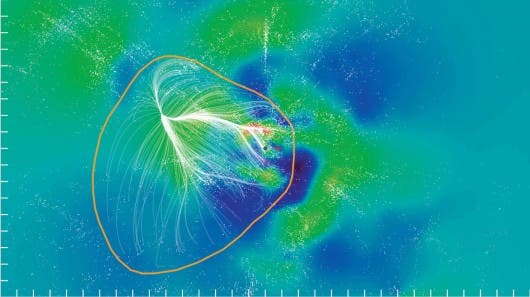
Our sun is but a tiny speck of light among billions, part of the spiral galaxy we familiarly call the Milky Way. That in itself makes us puny humans feel extremely humble, but things get really out of proportion when you zoom out. Galaxies on their own turn congregate in the hundreds or even thousands, bound together by gravity to form a structure called galaxy clusters. These clusters can yet again cluster to form a mega structure astronomers typically refer to as a supercluster. Now, a team of international astronomers led by researchers at University of Hawaii at Manoa have mapped out the contour of the supercluster the Milky Way belongs to called “Laniakea” (Hawaiian for “immense sky”).
The astronomers used the National Science Foundation’s (NSF’s) Green Bank Telescope (GBT), in conjunction with other radio telescopes dotted around the planet to map out the peculiar velocity of the other galaxies that surround the Milky Way. This allowed them to define a contour for Laniakea, which is 500 million light-years in diameter and contains an incredible one hundred million billion suns extending across 100,000 galaxies.
“We have finally established the contours that define the supercluster of galaxies we can call home,” said R. Brent Tully, an astronomer at the University of Hawaii at Manoa. “This is not unlike finding out for the first time that your hometown is actually part of much larger country that borders other nations.”
The Laniakea Supercluster is held together by a large flat gravitational basin with a domain of attraction that spreads across the entire Supercluster.
Next, the researchers plan on translating the mapped velocities into three-dimensional space to come to a better understanding of how the large-scale cosmos works and white kind of influence Superclusters have in the universe. Astronomers are also interested in what they call the Great Attractor – a localized concentration of mass tens of thousands times that of the Milky Way which has a powerful influence on the inward motion clusters have within the Laniakea Supercluster.
Findings appeared in the journal Nature.






